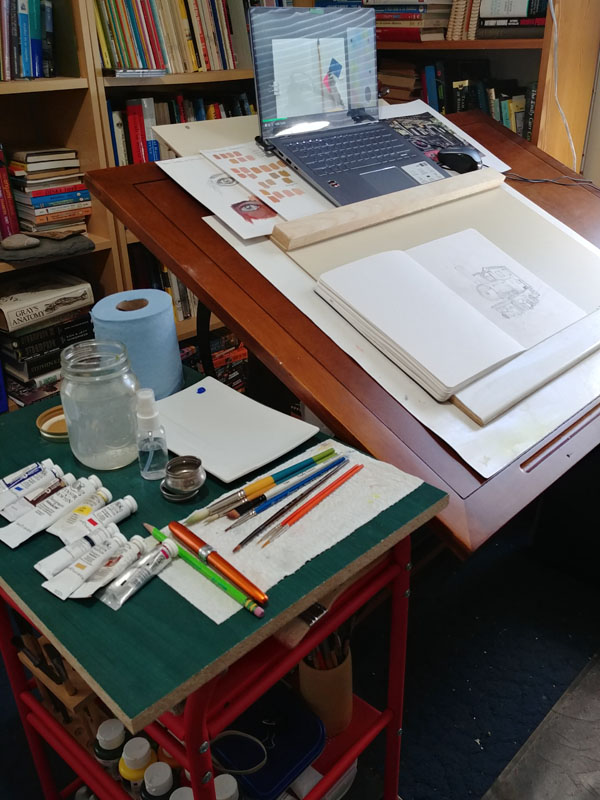I’ve spent two years being “isolated” by an inability to run around because of a bad knee and rheumatoid arthritis. You’d think I’d be used to it by now. But the truth is, this new form of “isolation” is getting to me, probably because I can’t make pilgrimages to the local art and book stores (they’ve all been closed since Mid-March here in Quebec.
On the one hand, this isolation is nice as I have my family home so we’ve been baking/cooking more. I made scones last night. On the other hand, we’re watching and fretting over too much news, watching too many Harry Potter, Lord of the Rings, etc. movies and generally all discipline in out lives has gone to pot. I hope you’re doing better on that score.
I may be learning something about my art production, or lack thereof. On and off I’ve tossed around the idea of giving up sketchbooks in favor of working on single sheets of paper. The later has always made more sense to me and for sure more convenient if you like to use different papers, different sizes of paper, and maybe different surfaces. Sketchbooks have always remained big a part of my sketching, though, because I do (did) most of it on location.
With the isolation, however, I’ve been doing almost all my drawing on hunks of 6×9 paper, whether that be sketching paper, toned paper, or watercolor paper. The darn things are everywhere and most of them end up in the trash.
I’m beginning to think that much of the reason for this is that I don’t value a single piece of paper like I do a sketchbook. A sketchbook is a collection of sorts, a compendium of what I did over a time period. These single sheets don’t do that. Heck, I’m not even dating them. I just draw something, set aside that piece of paper, and grab another sheet.
Another thing spins off of that for me. If I’m not filling sketchbooks I don’t feel as much need to sketch and maybe more to the point, I have no direction. Some of this may simply be the stressful situation these days. I don’t know. Anyways, I’m curious, do sketchbooks organize and/or provide discipline for your art?
I’ve been sketching a bunch of Schleich animal figures I have collected. These are beautiful models. While small, they don’t move. Some of the sketches were done in pencil, some in pen. Some have been done quickly, while others were done more carefully. It’s been fun but more a matter of doodling than sketching. Here’s a pig that I did with pen and gouache. This one was done in a sketchbook I made from Strathmore Toned Tan (184lb) paper.
 I wanted to post some of the others but realized that the garbage got taken out, along with all the rest of them. Maybe I need to go back to using sketchbooks (grin).
I wanted to post some of the others but realized that the garbage got taken out, along with all the rest of them. Maybe I need to go back to using sketchbooks (grin).







